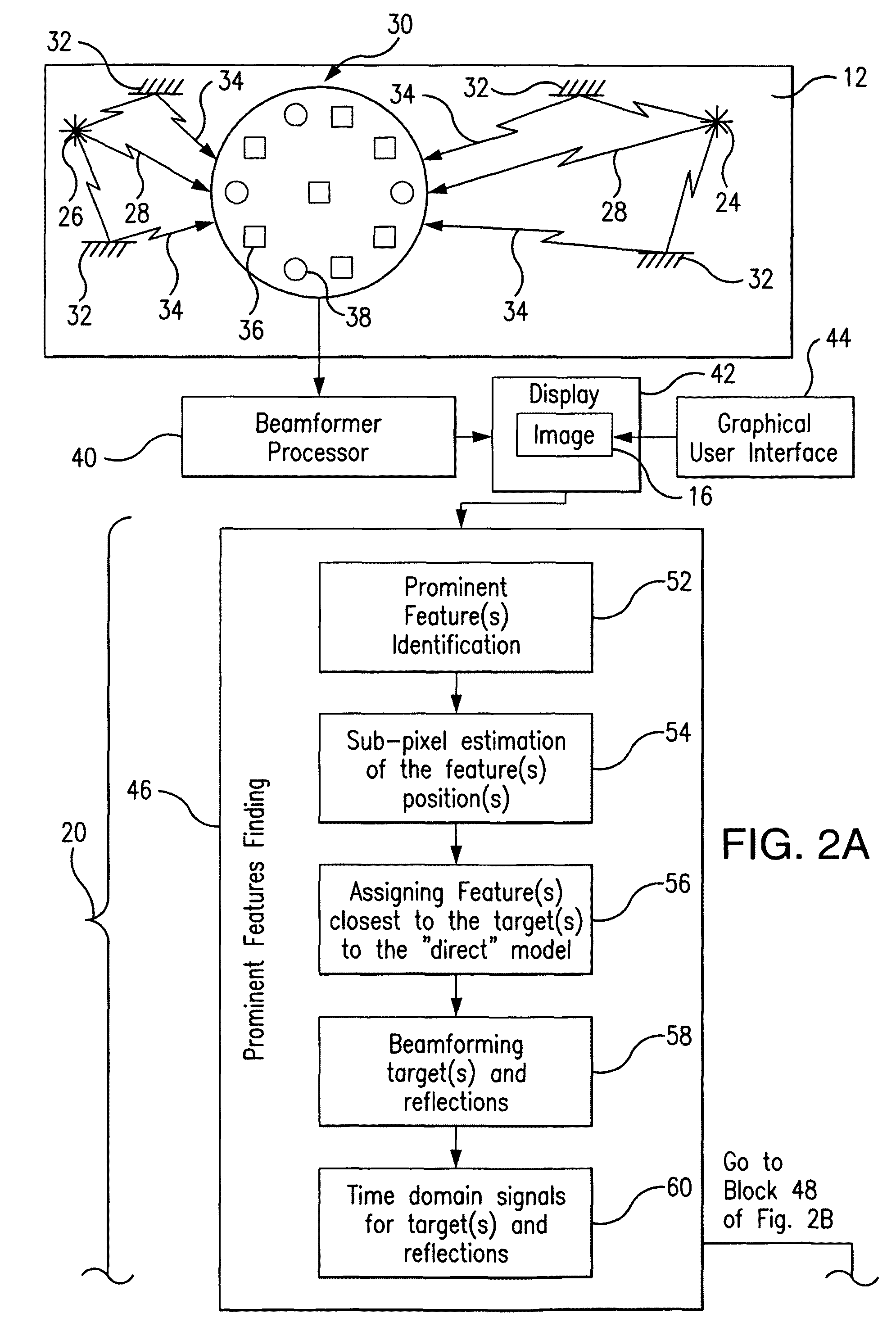Method and system for dereverberation of signals propagating in reverberative environments
a technology of dereverberation and signal propagation, applied in the field of data processing, can solve the problems of difficult recovery of s, high cost of computation, and contamination of recorded signals
- Summary
- Abstract
- Description
- Claims
- Application Information
AI Technical Summary
Benefits of technology
Problems solved by technology
Method used
Image
Examples
Embodiment Construction
[0058]Referring to FIG. 1, illustrating a basic concept underlying the general principles of the subject method and system for dereverberation of signals propagating in reverberative environments, when a signal 10 (also referred to herein as data) propagates in a space of interest 12, it may be affected by the reverberating surfaces. The signal reaching a sensor in a realistic environment contains, in addition to the part which arrives directly from the signal source, also a number of environmental reflections. The directly arrived signals, as well as the number of the reflections, have their respective direction of propagation 141, 142, 143, . . . 14N.
[0059]When a representation of spatial distribution of signals mapped to the space of interest (further also referred to herein as an image 16) is calculated, the source signal, as well as its significant reflections, manifest themselves as specific features 18 found in the image 16, which may be seen in the form of intensity peaks. T...
PUM
 Login to View More
Login to View More Abstract
Description
Claims
Application Information
 Login to View More
Login to View More - R&D
- Intellectual Property
- Life Sciences
- Materials
- Tech Scout
- Unparalleled Data Quality
- Higher Quality Content
- 60% Fewer Hallucinations
Browse by: Latest US Patents, China's latest patents, Technical Efficacy Thesaurus, Application Domain, Technology Topic, Popular Technical Reports.
© 2025 PatSnap. All rights reserved.Legal|Privacy policy|Modern Slavery Act Transparency Statement|Sitemap|About US| Contact US: help@patsnap.com



